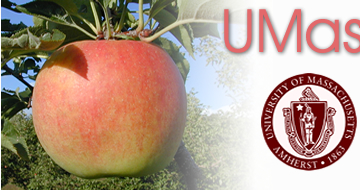

| FRUIT ADVISOR HOME | CONTACT | ABOUT | ||
 |
 |
|
| Consumer Evaluation of New, Antique, and Little Known Apple Varieties | ||
|
|
||
Basis and Rational for this Study We have been growing and evaluating new apple varieties at the UMass Cold Spring Orchard Research and Education Center (CSOREC) for 25 years. Recently, we have started to sell fruit at the Cold Spring Orchard through a newly-opened farm stand. As part of our fruit-evaluation process, we make new varieties available to customers who frequent our stand. The suggestions made in this report are the result of direct feedback from customers and results from taste evaluations. Materials & Methods Many new varieties are grown at the UMass Cold Spring Orchard. Prior to the start of the harvest season we selected 20 varieties that we felt were different, had exceptional quality, fit into one of our marketing periods, and would be available in sufficient quantity for taste evaluation by customers. A fruit evaluation form was developed to quantify respondents opinions about quality, appearance, and organoleptic (taste) properties of each of the selected apples and the importance of such varieties available to the consuming public. Questions also were developed to determine the importance to the respondent of having new and different apple varieties available at roadside stands. Throughout the harvest season, the selected varieties were monitored for maturity so that they could be harvested at the appropriate time. The date of harvest of each variety is listed in Table 2. On each harvest date, a 1- to 3-bushel sample was harvested and placed in regular air storage at 32 degrees F. Samples for evaluation by customers were removed from storage each day for evaluation that day. At the time of harvest, a 10 apple subsample was taken to document fruit characteristics, quality, and maturity. During this evaluation, the diameter and weight of fruit were first determined, and then, the percent red color of the surface of each apple was estimated to the nearest 10% . Fruit flesh firmness was determined using an Efegi penetrometer. The percent soluble solids was measured in the juice collected while measuring flesh firmness using a hand-held refractometer. Fruit were then cut in half at the equator, dipped in iodine solution, and the starch distribution and intensity were then estimated using the Cornell Generic Starch Chart on a scale of 1 to 8 where 1 was considered immature and 8 was over-mature. |
||
| ©Copyright 2008 University of Massachusetts Amherst. Site policies. Produced and maintained by the UMass Fruit Program. |